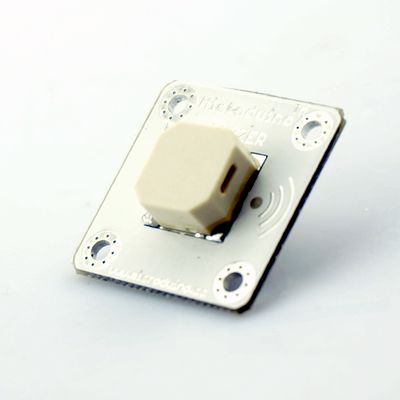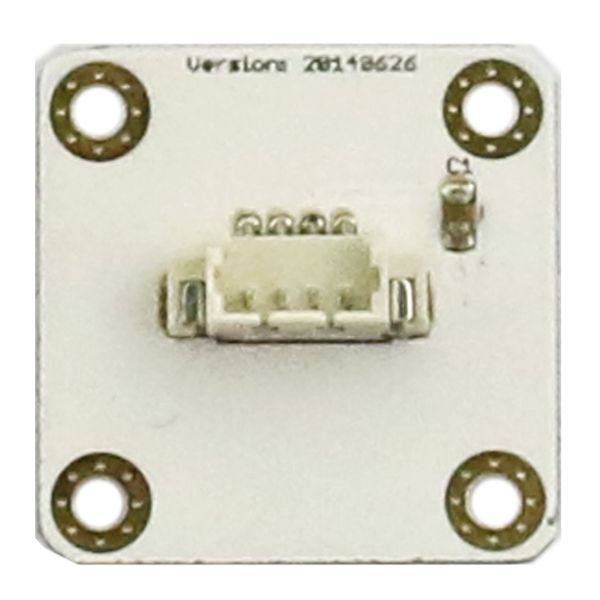Microduino-BUZZER
From Microduino Wiki
Revision as of 06:27, 7 July 2015 by 1304410487@qq.com (talk) (Created page with "{{Language|Microduino-Buzzer }} {| style="width: 800px;" |- | 400px|thumb|right| Microduino-Buzzer Microduino-Buzzer is passive just like a ma...")
| Language: | English • 中文 |
|---|
|
Microduino-Buzzer is passive just like a magnetic speaker. It needs voltage with different frequency and thus can make sound accordingly. The sound becomes louder when the frequency gets higher.
Contents[hide]Feature
Specification
Document
DevelopmentIt can be used to make various kinds of sound through the buzzer. Application
#define buzzer_pin 6
void setup()
{
pinMode(buzzer_pin,OUTPUT);
}
void loop()
{
for(int i=200;i<=800;i++) //Increase the frequency from 200HZ to 800HZ circularly.
{
tone(buzzer_pin,i); //Output frequency in the port.
delay(5); //The frequency lasts for 5ms.
}
delay(1000); //The highest frequency lasts for 1s.
for(int i=800;i>=200;i--)
{
tone(buzzer_pin,i);
delay(10); //The frequency lasts 10ms.
}
}
PurchaseHistoryImage
|


